Religious Adherence
The religious structure can be an important tool in segregating clusters of a surnames distribution. Religious groups will tend to segregate geographically. For example Roman Catholicism can indicate the origin of a cluster of individuals was Native Irish. Similarly Church of Ireland adherence might suggest the group were Scottish protestants but not Presbyterians, while members of the Church of England were in all likelihood English in origin. This is not to say groups cannot overlap or intermingle. It’s simply an element of a surname distribution of which researchers should be aware. There were 1738 Millers in the 9 counties of historic Ulster. It is best to isolate the Ulster Millers from the larger Ireland wide group. The origin of the Miller surname outside Ulster is largely the result of the Norman conquest of Ireland in the 13th century. While nominally “English”, the Norman Lords and their vassals soon became assimilated into the Irish culture and historians have ofteen noted they were, “more Irish than the Irish”. The Ulster Millers were Scots or English planters and warrant separate treatment. Just over half of all Ulster Millers were Presbyterians. The next largest group belonged to the Church of Ireland followed by the catch all group called “other”. In terms of regional distributions, Presbyterian’s were most common in Antrim and Londonderry while adherents of the Church of Ireland were broadly distributed. Roman Catholics were found in Londonderry, Fermanagh and Down. Naturally the metropolis of Belfast drew population from all regions and religious groupings of the province. It’s worth while looking at the association between religion and occupation. We previously looked at the role of farmers in identifying the persistence of surnames. Migration to Ulster was strongly influenced by process of plantation in the early 17th century. The proportions awarded to Undertakers were based on geography. Two belts of Baronies Were distributed based on the origin of the Undertaker. The southern belt was awarded to English Undertakers, giving them easier proximity to the home country. Similarly the Scottish undertaker was largely confined to the more northerly belt between the English territory and the county of Londonderry to the north. This segregation strongly influenced the settlement pattern with Presbyterians in the North and non Scottish planters in the south. When we segregate the non Scot farmer from the rest it of the planters it is clear that the early Presbyterian farming planters reflected this reality.The Spread of Presbyterians
Approximately 60 Undertakers, either very rich land owners in Scotland, or at least the moderately rich, were awarded estates in Ulster. They met with varying degrees of success. They took possession of their estates (which had been confiscated from Irish Lords) in 1610. The early settlements had Presbyterian ministers to tend to their spiritual needs but formal Congregations were not established for some time. By 1630 a number of congregations had been formed reflecting population growth and the presence of Presbyterian settlers.The Diffusion Model
The following model is based on an exercise which identified the reality that the Presbyterian faith, and the population with which it came, took time to spread across the Ulster landscape. The question was how could it be modelled? A logical starting point would be to look at the dates of formation of individual congregations. The model drew heavily from The Presbyterians in Ireland by Laurence Kirkpatrick which provided a history of 250 congregations and their dates of formation. Once located the next step was assigning a hinterland to each congregation. The process was somewhat arbitrary and a territory with a five mile radius was selected. Eras were created to cover between 20 and 30 years: • The first period was selected to end with the taking of the muster roll in 1630. • The second era ended in 1650, and covered the Irish insurrection and a period of limited population expansion. • The third period ended in 1671 and included the Cromwellian confiscations and a period of Presbyterian persecution. • The fourth period, 1671 - 1691, witnessed population expansion, the result of bad harvests and rising rents in Scotland. • The final era, ending in 1710 would be the dawn of mass migration to America.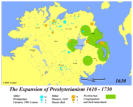
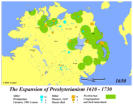
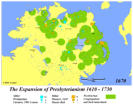
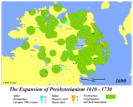
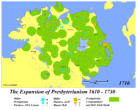
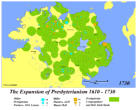


GeoGenealogy

The Miller Surname Study
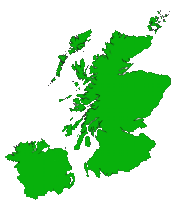
GeoGenealogy















